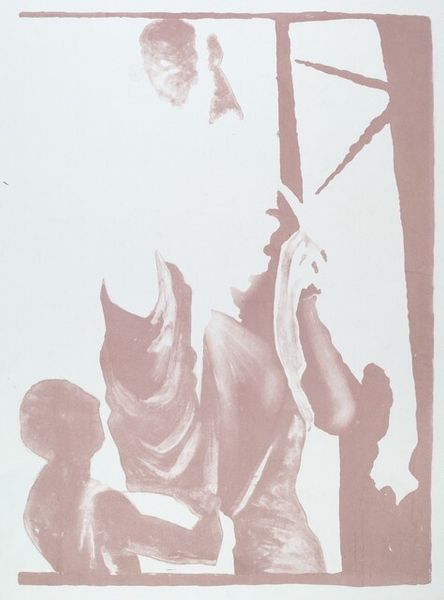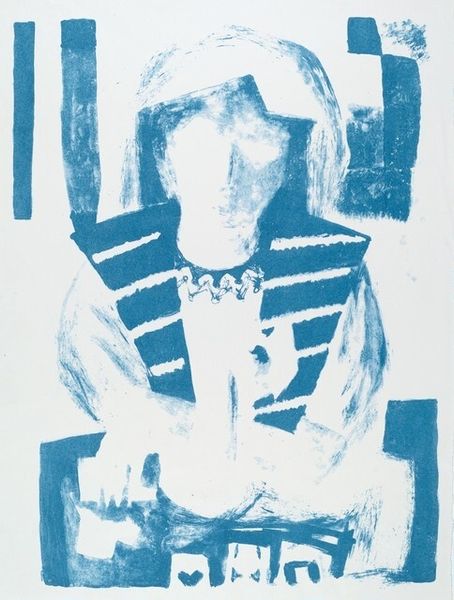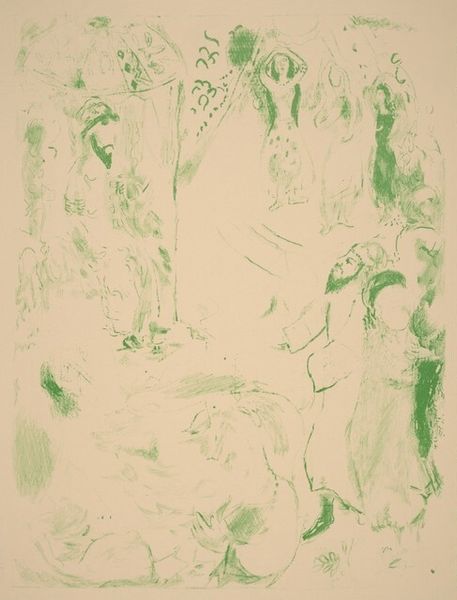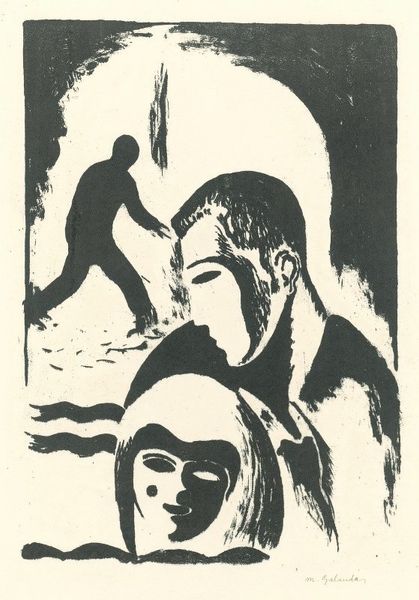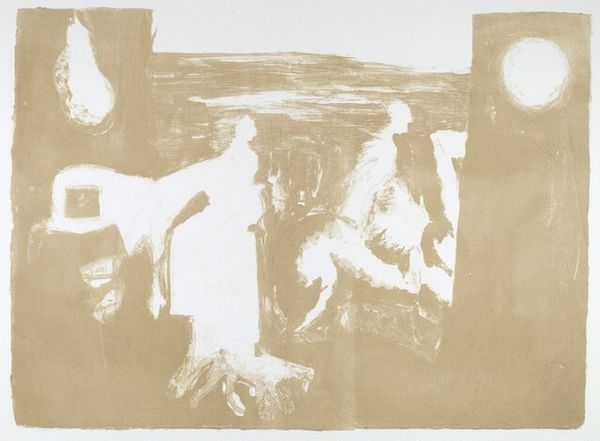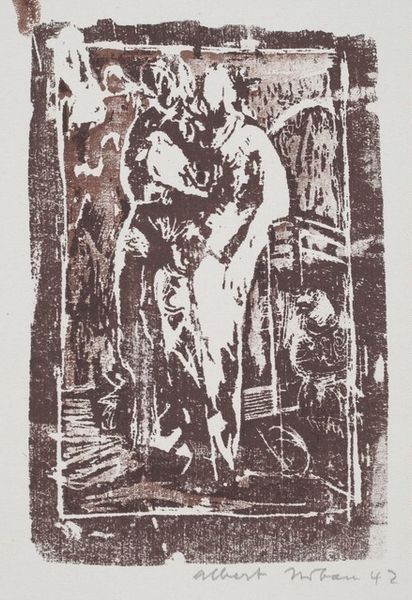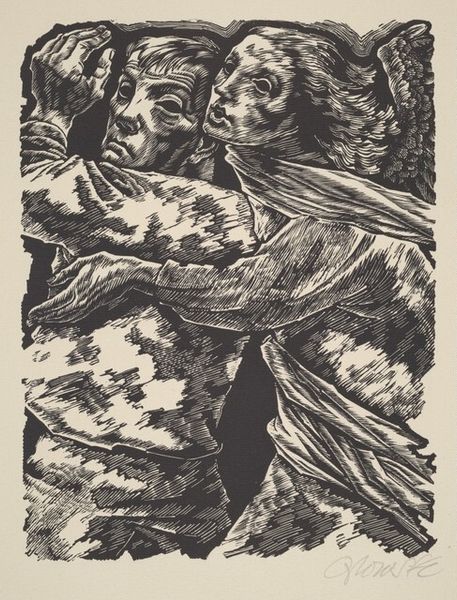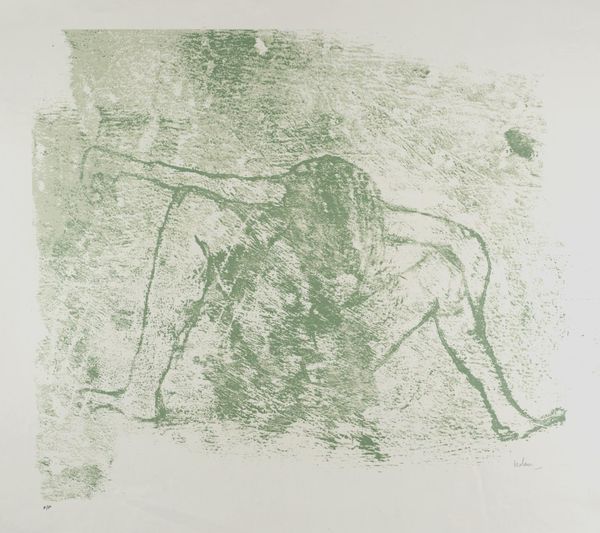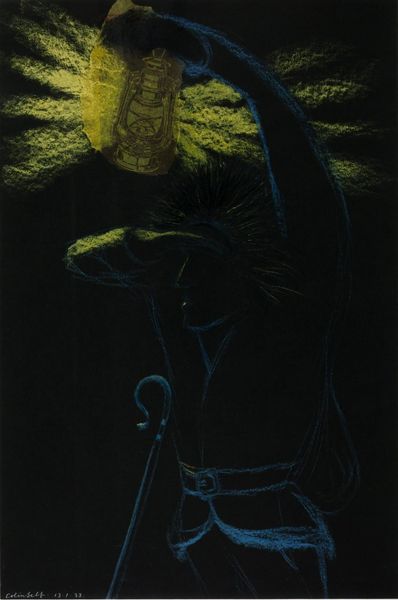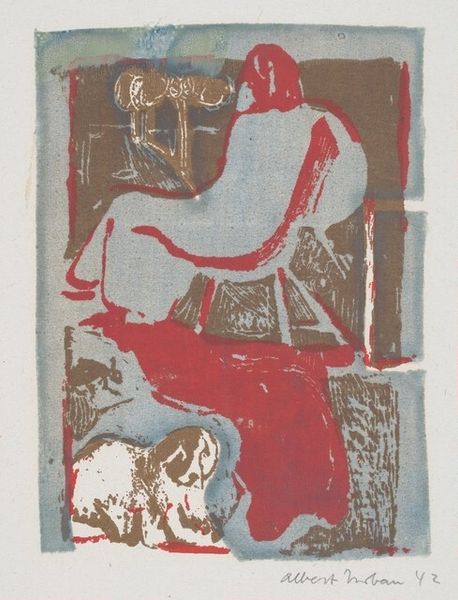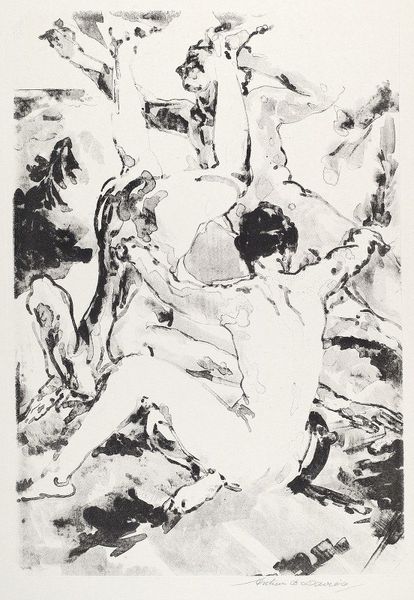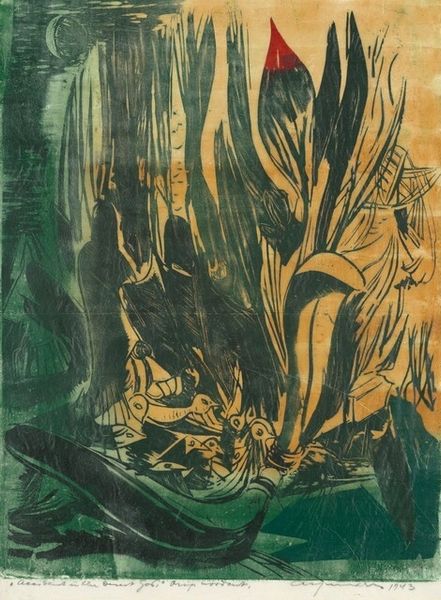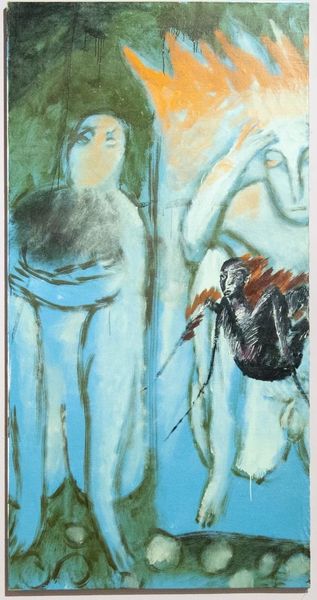
graphic-art, print
#
portrait
#
graphic-art
# print
#
portrait reference
#
portrait drawing
#
portrait art
#
fine art portrait
#
monochrome
Copyright: National Gallery of Art: CC0 1.0
Curator: Benton Spruance’s 1950 lithograph, Judith, presents a scene heavy with historical and cultural implications. The artist created it at a key moment in postwar American printmaking, a period of renewed interest in narrative and figuration. Editor: It’s stark. Even in its monochromatic presentation, there's an immediacy to it. Judith’s downturned gaze seems weighted down, while the composition itself almost suggests a silent reckoning. Curator: That feeling of silent reckoning speaks directly to the historical context of the Judith narrative, deeply rooted in cultural memory. Traditionally, she’s viewed as a figure of courage. Spruance captures that iconic act and examines how that event transforms the protagonist. The use of lithography—a printmaking process that lends itself to strong contrasts and textural variety—emphasizes her complexity and the deed she has performed. Editor: The starkness could reflect the psychological trauma. The raised arm holding the head, a small child to her side, creates an interesting contrast of violence and vulnerability. Could Spruance be asking the viewer to question Judith's righteousness and how acts of violence might impact others and even one's self? I’m interested in those faint skeletal markings toward the bottom right… do they offer more insight? Curator: Those elements are open to interpretation. It is known that Spruance himself adhered to a deep faith tradition, and often expressed a sensitivity for humanity's spiritual struggle. Given that he also focused on social-justice issues in much of his other work, those symbols, for me, add to a sense of both moral struggle and perhaps… ultimate judgement. How the cultural trope can actually come at an ultimate cost. Editor: I can see that now. The use of the green hue, almost acidic, makes the image all the more compelling. Curator: For me, Spruance gives voice to how individuals, especially women, contend with monumental and morally ambiguous events in their lives. Judith isn’t merely a triumphant figure; she becomes a complex individual marked by her experiences and their aftermath. Editor: I'm walking away seeing Judith as a symbol not just of heroism but as a symbol of the burdens and contradictions inherent in such actions. A more complete picture, definitely.
Comments
No comments
Be the first to comment and join the conversation on the ultimate creative platform.
